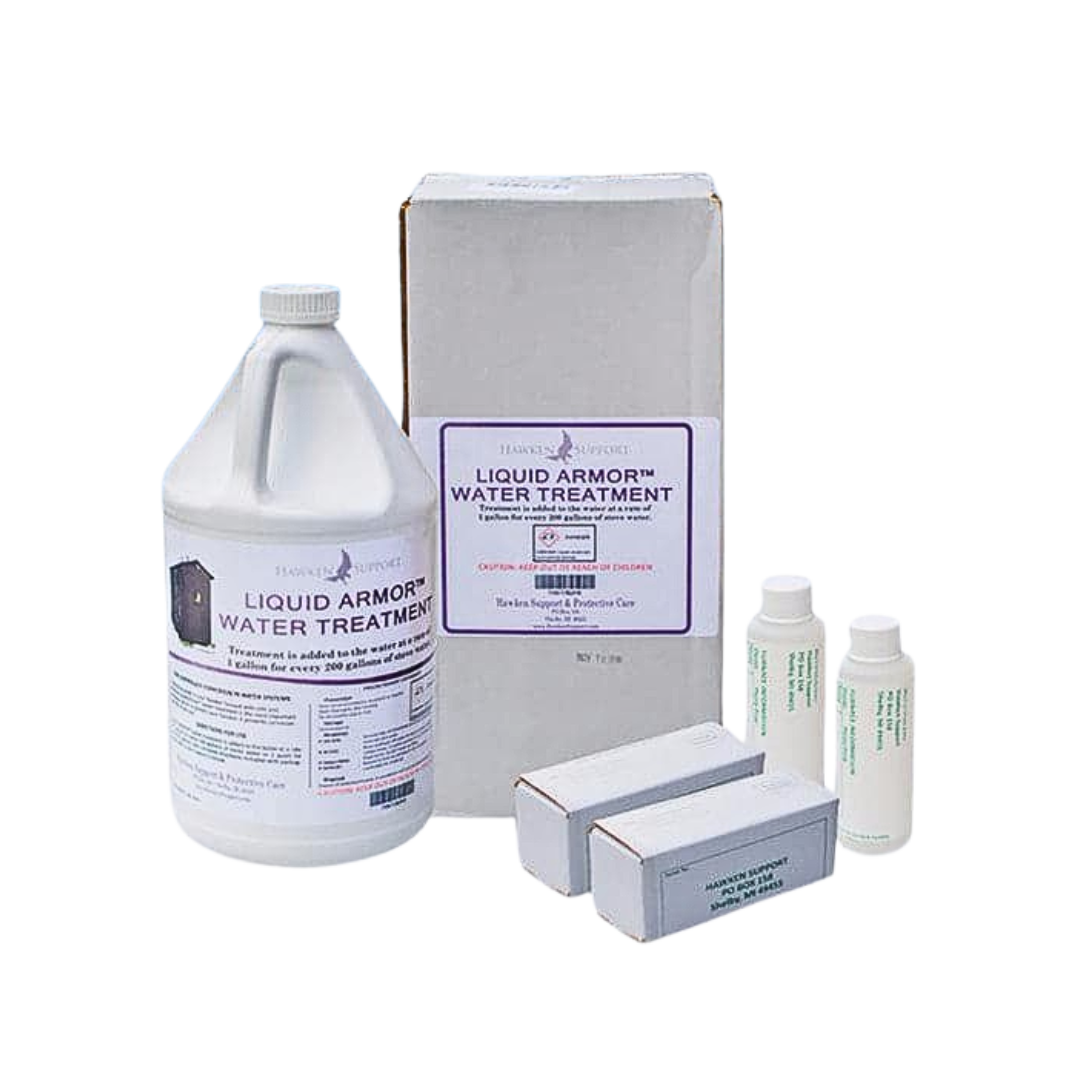Home » Business And Management (Page 5)
Category Archives: Business And Management
5 Must-Have Jersey Hijabs for Everyday Wear
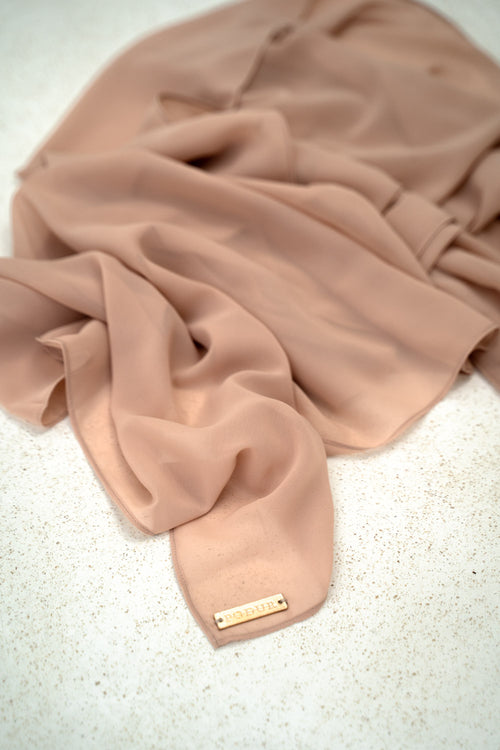
In the world of modest fashion, hijabs are a staple piece for many Muslim women. Jersey hijabs, in particular, are a popular choice due to their soft and stretchy material that drapes beautifully. Whether you're running errands, heading to work, or meeting friends for lunch, having a collection of versatile jersey hijabs is essential. Here are five must-have jersey hijabs for everyday wear:
1. The Classic Black Hijab
Why It's Essential:
- Black hijabs are versatile and can be styled with almost any outfit.
- Perfect for formal occasions or everyday wear.
- Creates a chic and sophisticated look.
Styling Tips:
- Pair with a white button-down shirt and jeans for a casual yet polished look.
- Wrap it in a turban style for a fashion-forward statement.
- Layer over a maxi dress for a modest and elegant outfit.
2. The Neutral Tone Hijab
Why It's Essential:
- Neutral tone hijabs in shades like beige, taupe, or grey are great for everyday wear.
- Easy to mix and match with different colored outfits.
- Ideal for creating a minimalist and sophisticated look.
Styling Tips:
- Pair with a monochromatic outfit for a sleek and modern aesthetic.
- Wear with a floral dress for a soft and feminine touch.
- Style in a loose wrap for a relaxed and effortless vibe.
3. The Printed Hijab
Why It's Essential:
- Printed hijabs add interest and personality to your outfit.
- Great for expressing your personal style and creativity.
- Can be dressed up or down depending on the print and colors.
Styling Tips:
- Pair with a solid colored outfit to let the print stand out.
- Mix prints by combining a printed hijab with a patterned top or skirt.
- Experiment with different prints like florals, stripes, or geometric designs.
4. The Pastel Hijab
Why It's Essential:
- Pastel hijabs in soft shades like blush pink, baby blue, or mint green are perfect for a fresh and feminine look.
- Ideal for spring and summer outfits.
- Adds a subtle pop of color to your ensemble.
Styling Tips:
- Pair with white or cream-colored clothing for a soft and ethereal appearance.
- Layer over a denim jacket for a casual and trendy outfit.
- Wear with a flowy maxi skirt for a romantic and whimsical vibe.
5. The Textured Hijab
Why It's Essential:
- Textured hijabs like ribbed, ruffled, or pleated styles add dimension and interest to your look.
- Create a unique and eye-catching outfit with a textured hijab.
- Perfect for elevating a simple outfit with added detail.
Styling Tips:
- Pair with a fitted blazer and trousers for a sophisticated and chic ensemble.
- Combine with a maxi dress and statement belt for a trendy and fashion-forward outfit.
- Add a brooch or pin to highlight the texture of the hijab.
Having a variety of jersey hijabs in your wardrobe ensures that you can effortlessly create different looks for any occasion. Whether you prefer classic black hijabs or love experimenting with prints and textures, there is a jersey hijab style for everyone. Invest in these must-have jersey hijabs and elevate your everyday outfits with style and grace.
The Importance of Regular Maintenance for Your AC System
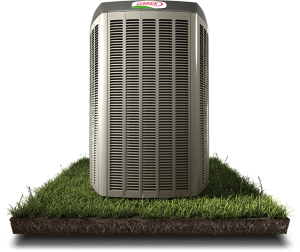
Keeping your air conditioning (AC) system in top working condition is crucial for ensuring comfort and efficiency in your home or office. Regular maintenance helps to extend the lifespan of your AC unit while also improving indoor air quality. Neglecting maintenance can lead to costly repairs and reduced performance. In this article, we will explore the importance of regular maintenance for your AC system.
1. Energy Efficiency
One of the primary reasons to ensure regular maintenance for your AC system is to maintain its energy efficiency. When your AC unit is dirty or has clogged filters, it has to work harder to cool your space, which results in higher energy consumption. By keeping your system well-maintained, you can lower your energy bills and reduce your carbon footprint.
Benefits of energy-efficient AC system:
- Lower energy bills
- Reduced environmental impact
- Improved cooling performance
2. Extended Lifespan
Regular maintenance can significantly extend the lifespan of your AC system. By scheduling routine inspections and tune-ups, you can identify and address any minor issues before they escalate into major problems. This proactive approach can help prevent unexpected breakdowns and costly repairs, ultimately prolonging the life of your AC unit.
Ways to extend the lifespan of your AC system:
- Change air filters regularly
- Clean condenser coils
- Inspect and replace worn-out parts
3. Improved Air Quality
Another crucial benefit of regular maintenance for your AC system is the improvement of indoor air quality. Over time, dust, dirt, and allergens can accumulate in your AC unit, leading to poor air circulation and potentially aggravating respiratory problems. By keeping your system clean and well-maintained, you can ensure that the air circulating in your home or office is free of pollutants and allergens.
Ways to improve indoor air quality:
- Regularly clean air ducts
- Replace air filters as needed
- Invest in an air purifier
4. Prevent Costly Repairs
Regular maintenance can help you avoid costly repairs down the line. By addressing minor issues early on, you can prevent them from turning into major problems that require expensive repairs or replacements. Routine inspections and maintenance tasks can help keep your AC system running smoothly and efficiently, saving you both time and money in the long run.
Tips to prevent costly repairs:
- Schedule annual maintenance checks
- Keep the area around the outdoor unit clear of debris
- Listen for any unusual noises or odors coming from the system
5. Comfort and Peace of Mind
Finally, regular maintenance for your AC system can provide you with the comfort and peace of mind knowing that your system is operating at its best. A well-maintained AC unit can effectively cool your space, regulate humidity levels, and provide a comfortable environment for you and your family or employees. By staying on top of maintenance tasks, you can enjoy reliable performance from your AC system year-round.
Additional benefits of regular maintenance:
- Consistent cooling performance
- Reduced risk of unexpected breakdowns
- Improved overall efficiency
Don't wait until your AC system breaks down to seek maintenance. By scheduling regular tune-ups and inspections, you can ensure that your AC unit remains in optimal condition, providing you with cool and comfortable indoor spaces. Contact a professional HVAC technician today to schedule maintenance for your AC system and enjoy the benefits of a well-maintained cooling system.
Revolutionize Your Space with Thin Brick: A Modern Twist on Traditional Design
When it comes to designing or renovating your space, incorporating thin brick can add a touch of sophistication and charm. Thin brick provides a modern twist on traditional design, offering a unique way to transform any room into a stunning masterpiece. Whether you're looking to add a rustic touch to your home or create an industrial look in your office, thin brick is a versatile material that can be used in a variety of ways. Let's explore how you can revolutionize your space with thin brick!
The Benefits of Thin Brick
Durable and Long-Lasting
- Thin brick is made from high-quality materials that are built to last.
- It is resistant to wear and tear, making it a durable option for both indoor and outdoor spaces.
Cost-Effective
- Thin brick is more affordable than traditional brick, making it a cost-effective choice for any budget.
- Its lightweight nature also helps reduce shipping costs and installation fees.
Easy to Install
- With its thin profile, thin brick is easier to install than traditional brick.
- It can be applied directly to various surfaces without the need for additional structural support.
Ways to Use Thin Brick in Your Space
Accent Wall
Creating an accent wall with thin brick can instantly change the look and feel of a room. Whether you choose to cover an entire wall or just a section, thin brick adds texture and depth to the space.
Fireplace Surround
A fireplace surrounded by thin brick can become the focal point of any room. The warmth and character of the brick will enhance the cozy ambiance of the space.
Kitchen Backsplash
Adding a thin brick backsplash in the kitchen can give it a charming, farmhouse feel. The natural beauty of the brick pairs well with any style of cabinetry and countertops.
Exterior Facade
Revamp the exterior of your home or office with thin brick to create a striking first impression. The timeless appeal of brick can enhance the curb appeal of the building.
Design Tips for Using Thin Brick
Choose the Right Color
- Consider the existing color scheme of the space when selecting a thin brick color.
- Lighter shades can make a room feel more spacious, while darker shades add warmth and richness.
Mix and Match Patterns
- Experiment with different patterns and layouts to create a unique design with thin brick.
- Herringbone, basket weave, vertical or horizontal stack are some popular options to consider.
Combine Materials
- Combine thin brick with other materials like wood, metal, or concrete to add depth and visual interest to the space.
- Creating a contrast between textures can elevate the overall design aesthetic.
Where to Purchase Thin Brick
Thin brick can be purchased from various suppliers, both online and in-store. Here are a few popular options:
- Home improvement stores like Home Depot or Lowe's
- Specialty brick suppliers such as General Shale or Boral
- Online retailers like BuildDirect or Wayfair
Before making a purchase, be sure to measure the area where you plan to install the thin brick to determine how much material you will need.
Conclusion
Thin brick is a versatile and cost-effective way to add character and charm to any space. Whether you're renovating your home, office, or commercial property, thin brick can help you achieve a modern twist on traditional design. By exploring different ways to incorporate thin brick and following design tips, you can create a unique and stylish look that will transform your space.
Expert Advice on Siding Installation: Tips from Leading Contractors

When it comes to enhancing the exterior of your home, installing new siding can make a significant impact. However, the success of your siding project largely depends on the installation process. To ensure a smooth and successful siding installation, we reached out to leading contractors in the industry, including Composite Carpentry, for their expert advice. Here are some valuable tips to consider before starting your siding installation project.
Preparation is Key
Choose the Right Siding Material
- Consider factors such as durability, maintenance, cost, and aesthetic appeal when selecting the siding material.
- Popular siding options include vinyl, fiber cement, wood, and metal.
- Consult with your contractor to determine the best material for your specific needs and budget.
Inspect and Prepare the Surface
- Examine the existing exterior surface for any signs of damage, rot, or mold.
- Repair any issues before installing the new siding to ensure a smooth and even application.
- Clean the surface thoroughly to remove dirt, debris, and peeling paint.
Hiring the Right Contractor
Do Your Research
- Seek recommendations from friends, family, or neighbors who have had siding installed recently.
- Check online reviews and ratings to learn more about the contractor's reputation.
- Verify that the contractor is licensed, insured, and experienced in siding installation.
Get Multiple Quotes
- Request estimates from several contractors to compare pricing and services offered.
- Avoid choosing a contractor solely based on the lowest price, as quality of work should be a priority.
- Ask about the contractor's warranty and aftercare services for added peace of mind.
During the Installation Process
Stay Informed
- Communicate regularly with the contractor to stay updated on the progress of the installation.
- Address any concerns or questions promptly to ensure a smooth workflow.
- Inspect the work at various stages to ensure it meets your expectations.
Weather Considerations
- Plan the installation during a time when weather conditions are favorable for siding application.
- Avoid installing siding during extreme temperatures, high winds, or heavy precipitation.
- Consult with your contractor to determine the ideal timing for the installation based on weather forecasts.
After Installation
Maintenance Tips
- Regularly inspect the siding for any signs of damage, warping, or discoloration.
- Clean the siding periodically to remove dirt, mildew, and other debris.
- Consider applying a protective coating or sealant to prolong the life of your siding.
Addressing Issues
- If you encounter any problems with your siding after installation, contact your contractor immediately for assistance.
- Most reputable contractors offer warranties on their work, so be sure to understand the coverage and procedures for filing a claim.
- Addressing issues promptly can prevent further damage and ensure the longevity of your siding.
By following these expert tips on siding installation, you can ensure a successful and long-lasting outcome for your home improvement project. Remember that proper preparation, hiring the right contractor, and ongoing maintenance are key factors in the success of your siding installation. If you have any specific questions or concerns about your siding project, don't hesitate to consult with a professional contractor for personalized advice.
Save Time and Money with Expert Drain Cleaning Company Services

Image Source: Google
Dealing with clogged drains can be a frustrating and time-consuming task. Whether it's a sink, shower, or toilet, a blocked drain can disrupt your daily routine and cause inconvenience. Hiring a professional drain cleaning company can help you save both time and money in the long run. With their expertise and specialized tools, they can effectively unclog your drains and prevent future blockages, saving you from costly repairs and replacements.
The Benefits of Hiring a Drain Cleaning Company
1. Expertise and Experience
- Professional drain cleaners have the knowledge and experience to effectively unclog drains of all types. If you are looking for drain cleaning company then, you may navigate to this site.
- They can quickly identify the cause of the blockage and use the right tools to remove it efficiently.
- Their expertise helps prevent damage to your pipes and ensures the problem is addressed properly.
2. Specialized Equipment
- Drain cleaning companies use specialized tools and equipment that are not typically available to homeowners.
- Tools such as drain snakes, hydro-jetters, and video inspection cameras allow them to tackle even the toughest clogs.
- These tools help them clean your drains thoroughly and prevent future blockages.
Signs You Need Professional Drain Cleaning Services
1. Slow Drainage
- If water is draining slowly from your sink, shower, or bathtub, it could indicate a partial blockage in the drain.
- A professional drain cleaner can assess the situation and clear the blockage before it worsens.
2. Foul Odors
- Unpleasant odors coming from your drains can be a sign of a buildup of debris or organic matter.
- A drain cleaning company can remove the source of the odor and clean your drains to eliminate the smell.
3. Gurgling Sounds
- If you hear gurgling sounds when water is draining, it could indicate a blockage in the pipes.
- A professional can inspect the pipes and remove any obstructions to restore proper drainage.
Preventive Maintenance for Your Drains
1. Regular Inspections
- Schedule routine inspections of your drains to identify any potential issues before they become major problems.
- A professional drain cleaning company can inspect your drains using video cameras to pinpoint any blockages or damage.
2. Drain Cleaning Services
- Regular drain cleaning services can help prevent clogs and keep your drains running smoothly.
- A professional cleaner can remove buildup and debris from your pipes to maintain proper flow.
3. Proper Disposal Practices
- Avoid flushing items like grease, oil, coffee grounds, and paper products down your drains, as they can cause clogs.
- Dispose of these items properly to prevent blockages and maintain the health of your drains.
Choosing the Right Drain Cleaning Company
1. Reputation
- Research different drain cleaning companies and read reviews from past customers to gauge their reputation.
- Choose a company with a proven track record of providing quality service and customer satisfaction.
2. Licensing and Insurance
- Ensure the drain cleaning company is licensed and insured to protect yourself in case of any accidents or damages during the service.
- Ask for proof of insurance and licensing before hiring a company to work on your drains.
3. Pricing
- Get quotes from multiple drain cleaning companies to compare prices and services offered.
- Avoid companies that provide significantly lower prices, as they may cut corners or use inferior materials.
By hiring a reputable drain cleaning company, you can ensure that your drains are properly maintained and free from blockages. Investing in professional drain cleaning services can save you time and money in the long run by preventing costly repairs and replacements.
Eco-Friendly Heating Solutions: A Closer Look at Outdoor Boiler Water Treatment
Heating is an essential aspect of everyday life, especially in regions with harsh winters. While staying warm is crucial, it's equally important to consider the environmental impact of the heating solutions we use. Outdoor boilers have gained popularity in recent years as a more sustainable option for heating homes and buildings. One key component of maintaining an eco-friendly outdoor boiler system is proper water treatment. In this article, we will take a closer look at the importance of outdoor boiler water treatment and how it contributes to a more sustainable heating solution.
The Role of Water Treatment in Outdoor Boiler Systems
Outdoor boiler systems work by heating water, which is then circulated through pipes to provide heat to the desired location. However, the water used in these systems can contain impurities such as minerals, salts, and organic matter. Over time, these impurities can build up and lead to various issues, including reduced efficiency, corrosion, and scale formation. This is where water treatment comes in.
Benefits of Water Treatment for Outdoor Boilers
- Prevents corrosion: Water treatment helps protect the metal components of the boiler from rust and corrosion, extending the lifespan of the system.
- Improves efficiency: By removing impurities from the water, treatment ensures that the boiler operates at optimal efficiency, reducing energy consumption.
- Prevents scale formation: Scale buildup can restrict water flow and reduce heat transfer, leading to decreased performance. Water treatment helps prevent scale formation, maintaining the boiler's efficiency.
- Reduces maintenance costs: Proper water treatment can lower maintenance requirements and repair costs by preventing issues associated with untreated water.
Types of Water Treatment for Outdoor Boilers
There are several methods of water treatment that can be used to maintain the health and efficiency of outdoor boiler systems. Some common approaches include:
Chemical Treatment
- Adding chemicals such as corrosion inhibitors, scale inhibitors, and pH adjusters to the water to prevent corrosion and scale formation.
- Regular testing and monitoring of water quality to ensure the proper balance of chemicals and water conditions.
Filtration
- Installing filters to remove impurities and sediment from the water before it enters the boiler system.
- Regularly replacing or cleaning filters to maintain their effectiveness.
Reverse Osmosis
- Using a reverse osmosis system to purify water by removing contaminants through a semi-permeable membrane.
- Requires regular maintenance and monitoring to ensure optimal performance.
Importance of Eco-Friendly Water Treatment
While water treatment is essential for the proper functioning of outdoor boiler systems, it's equally important to consider the environmental impact of the treatment methods used. Eco-friendly water treatment practices aim to minimize harm to the environment while still effectively treating the water. Some benefits of eco-friendly water treatment include:
Reduced Chemical Use
- Using environmentally friendly chemicals and treatment methods to reduce the overall chemical footprint.
Energy Efficiency
- Choosing water treatment methods that require less energy consumption, such as filtration systems that operate without the need for electricity.
Minimal Waste Generation
- Implementing treatment methods that produce minimal waste and are easily recyclable or biodegradable.
Conclusion
Outdoor boiler water treatment plays a crucial role in maintaining the efficiency and longevity of heating systems while also reducing their environmental impact. By incorporating eco-friendly water treatment practices, we can ensure that our heating solutions are not only sustainable but also environmentally responsible. Investing in proper water treatment for outdoor boilers is a worthwhile endeavor that benefits both the system and the planet.
Navigating Extreme Conditions: The Technology Behind Heat-Resistant Conveyor Belts
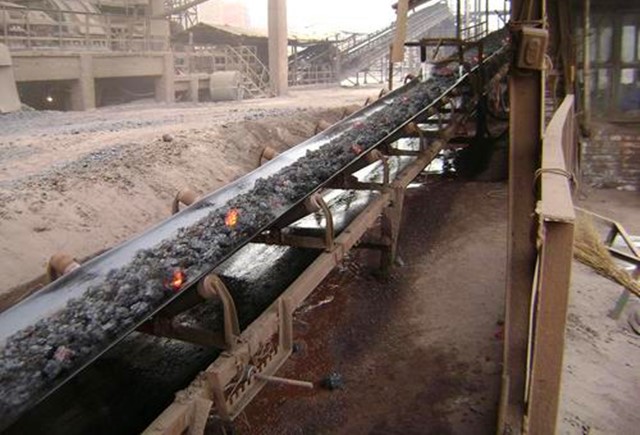
Image Source: Google
Conveyor belts are critical components in various industries, facilitating the efficient transportation of materials within a facility. However, in environments with extreme temperatures, such as those found in steel mills, cement plants, and other industrial settings, standard conveyor belts are not sufficient. To withstand high temperatures and harsh conditions, heat-resistant conveyor belts are essential. If you are looking for heat resistant conveyor belt, you should check Monster Belting.
The Importance of Heat-Resistant Conveyor Belts
Industrial processes often involve materials that are hot and abrasive, making it crucial to have conveyor belts that can withstand such conditions. Heat-resistant conveyor belts are specifically designed to handle high temperatures, ensuring the safe and efficient transport of materials in extreme environments. Some key reasons for the importance of heat-resistant conveyor belts include:
Key Features of Heat-Resistant Conveyor Belts
- Ability to withstand temperatures ranging from 150°C to 300°C
- Resistant to abrasion and wear from hot materials
- Excellent heat retention properties
- High tensile strength and flexibility
- Resistance to cracking and hardening
Applications of Heat-Resistant Conveyor Belts
Heat-resistant conveyor belts find applications in a wide range of industries where high temperatures are prevalent. Some common industries that rely on these specialized belts include:
- Steel manufacturing
- Cement plants
- Foundries
- Glass manufacturing
- Recycling facilities
Technology Behind Heat-Resistant Conveyor Belts
The design and construction of heat-resistant conveyor belts involve advanced technology to ensure their durability and performance in extreme conditions. Some key technologies used in the production of these belts include:
Materials Used
The choice of materials is crucial in ensuring the heat resistance of conveyor belts. Some common materials used in heat-resistant belts include:
- Carbon fiber
- Kevlar
- Silicone rubber
- Neoprene
- High-temperature resistant polymers
Specialized Coatings
Special coatings are applied to heat-resistant conveyor belts to enhance their performance. These coatings provide additional protection against heat, abrasion, and wear, ensuring the longevity of the belts. Some common coatings used include:
- PTFE (Polytetrafluoroethylene)
- PU (Polyurethane)
- Neoprene
- Flame-retardant materials
Advanced Vulcanization Process
Heat-resistant conveyor belts undergo a specialized vulcanization process to enhance their thermal properties. Vulcanization involves the application of heat and pressure to the belt, bonding the materials together and increasing their resistance to high temperatures. This process ensures the structural integrity of the belts even in extreme heat conditions.
Maintenance and Care of Heat-Resistant Conveyor Belts
To ensure the longevity and performance of heat-resistant conveyor belts, proper maintenance and care are essential. Some key maintenance practices for heat-resistant belts include:
Regular Inspections
Inspect the belts regularly for signs of wear, damage, or degradation. Address any issues promptly to prevent further damage.
Cleaning and Lubrication
Keep the belts clean and free from debris that could cause abrasion. Proper lubrication can also help reduce friction and extend the life of the belts.
Temperature Monitoring
Monitor the temperature of the belts regularly to ensure they are operating within safe limits. Excessive heat can cause damage to the belts and compromise their performance.
Conclusion
Heat-resistant conveyor belts play a crucial role in industries where extreme temperatures are a common challenge. By leveraging advanced materials, coatings, and manufacturing processes, these specialized belts are able to withstand high temperatures and harsh conditions, ensuring the safe and efficient transportation of materials. Proper maintenance and care are also essential to maximize the longevity and performance of heat-resistant conveyor belts, making them a reliable solution for navigating extreme conditions in industrial settings.
Exploring the Power of Liquid Germall Plus Preservative: A Comprehensive Guide
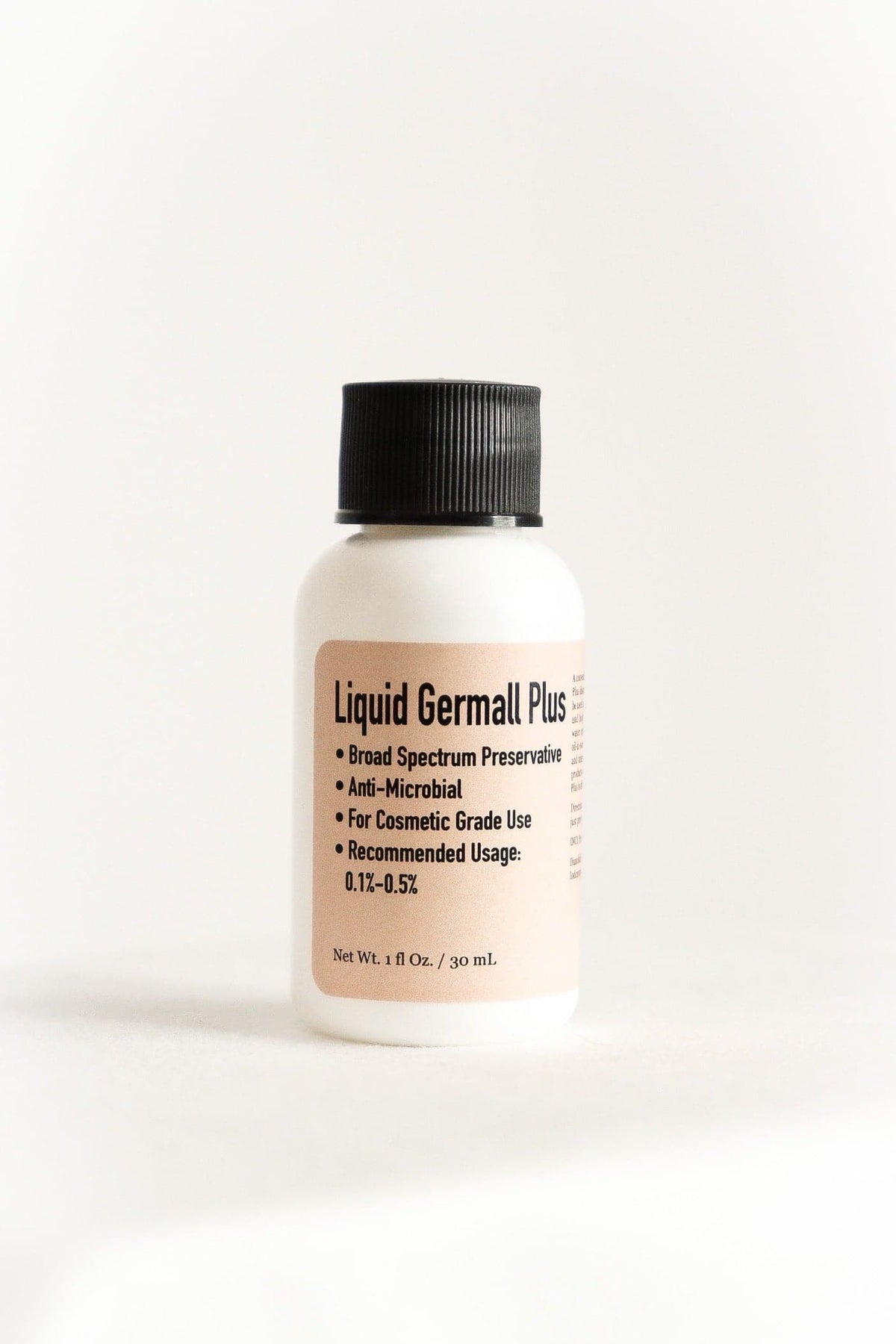
When it comes to formulating cosmetic and personal care products, preserving them effectively is crucial to ensure their safety and longevity. One popular preservative used in the industry is Liquid Germall Plus. Known for its broad-spectrum protection against bacteria, yeast, and mold, Liquid Germall Plus is a reliable choice for preserving a wide range of formulations. In this comprehensive guide, we will explore the power of Liquid Germall Plus preservative and how you can effectively incorporate it into your products.
The Basics of Liquid Germall Plus
What is Liquid Germall Plus?
- Liquid Germall Plus is a water-soluble preservative that is effective against a broad spectrum of microorganisms.
- It is a clear, viscous liquid that is easy to incorporate into various formulations.
- Liquid Germall Plus is heat stable and compatible with a wide range of cosmetic ingredients.
How Does Liquid Germall Plus Work?
- Liquid Germall Plus works by releasing formaldehyde-releasing agents that inhibit the growth of bacteria, yeast, and mold in cosmetic formulations.
- It is effective at low concentrations, making it a cost-effective preservative option for formulators.
- Liquid Germall Plus is suitable for use in a variety of products, including lotions, creams, shampoos, and more.
Benefits of Using Liquid Germall Plus
Effective Broad-Spectrum Protection
- Liquid Germall Plus provides reliable protection against a wide range of microorganisms, including gram-positive and gram-negative bacteria, yeast, and mold.
- It is particularly effective in water-based formulations where microbial growth is a concern.
Long-Lasting Preservation
- Formulations preserved with Liquid Germall Plus have a longer shelf life and remain stable over time.
- It helps prevent microbial contamination and spoilage, extending the usability of cosmetic products.
Compatibility with Various Formulations
- Liquid Germall Plus is compatible with a wide range of cosmetic ingredients, including emulsifiers, surfactants, and thickeners.
- It does not interfere with the color, scent, or texture of the final product.
Guidelines for Using Liquid Germall Plus
Recommended Usage Rates
- The recommended usage rate of Liquid Germall Plus is typically between 0.1% to 0.5% of the total formulation weight.
- It is important to follow the manufacturer's guidelines and conduct microbial testing to ensure proper preservation.
Optimal pH and Temperature Conditions
- Liquid Germall Plus is most effective in formulations with a pH between 3 to 8.
- It is heat stable up to 80°C, but it is recommended to add it to the formulation during the cooling phase to avoid deactivation.
Storage and Handling
- Store Liquid Germall Plus in a cool, dark place away from direct sunlight and heat sources.
- Handle the preservative with care and use appropriate safety precautions, such as wearing gloves and goggles.
Conclusion
Liquid Germall Plus is a powerful preservative that offers effective protection against microbial contamination in cosmetic and personal care products. By understanding its features, benefits, and proper usage guidelines, formulators can confidently incorporate Liquid Germall Plus into their formulations to ensure product safety and longevity. With its broad-spectrum protection and compatibility with various ingredients, Liquid Germall Plus is a valuable asset for preserving a wide range of beauty and personal care products.
Discover the Art of Japanese Cuisine: Essential Cookware for Traditional Dishes

Image Source: Google
Japanese cuisine is renowned for its delicate flavors, fresh ingredients, and meticulous preparation. To truly master the art of Japanese cooking and recreate authentic dishes at home, it's essential to have the right cookware. From sushi to tempura, each traditional Japanese dish requires specific tools and utensils to achieve the perfect taste and presentation. Let's take a closer look at some of the essential cookware for preparing traditional japanese cookware dishes.
Japanese Knives: The Heart of Japanese Cuisine
Types of Japanese Knives:
- Gyuto: A versatile chef's knife used for cutting, slicing, and dicing.
- Deba: A heavy, thick knife designed for filleting fish and chopping through bones.
- Yanagiba: A long, thin knife primarily used for slicing raw fish for sashimi.
Japanese knives are the cornerstone of Japanese cuisine and are prized for their sharpness, precision, and craftsmanship. Unlike Western knives, Japanese knives are typically single-beveled, making them ideal for precise cuts and intricate techniques. Investing in a set of high-quality Japanese knives will significantly enhance your cooking experience and allow you to achieve professional results.
Rice Cooker: The Foundation of Japanese Meals
Features of a Japanese Rice Cooker:
- Fuzzy Logic Technology: Ensures precise temperature and cooking time for perfect rice every time.
- Multifunctional Settings: Allows you to cook different types of rice, from white to brown rice, with ease.
- Keep Warm Function: Keeps the rice warm and fresh for extended periods without overcooking.
Rice is a staple in Japanese cuisine, and having a reliable rice cooker is essential for preparing delicious and fluffy rice for every meal. Japanese rice cookers are designed to cook rice to perfection, taking into account factors like temperature, moisture, and timing. With features like fuzzy logic technology and multiple cooking settings, a Japanese rice cooker will ensure that your rice turns out just right every time.
Cast Iron Teapot: A Symbol of Japanese Hospitality
Benefits of a Cast Iron Teapot:
- Heat Retention: Keeps tea hot for an extended period without the need for a heat source.
- Durability: Made from sturdy cast iron, these teapots are built to last a lifetime.
- Aesthetic Appeal: Adds a touch of elegance and tradition to the tea-drinking experience.
In Japanese culture, tea is more than just a beverage—it's a symbol of hospitality, respect, and tranquility. A cast iron teapot, known as a tetsubin, is a timeless piece of Japanese cookware that is not only functional but also beautiful. These teapots have been used in Japan for centuries and are prized for their ability to retain heat and brew tea to perfection. Whether you're serving guests or enjoying a quiet moment alone, a cast iron teapot is a must-have for any lover of Japanese cuisine.
Sushi Mat: Rolling Your Way to Delicious Sushi
How to Use a Sushi Mat:
- Place a sheet of seaweed (nori) on the sushi mat.
- Add sushi rice and your choice of fillings on top of the seaweed.
- Roll the sushi mat tightly to create a compact sushi roll.
Sushi is perhaps one of the most well-known Japanese dishes around the world, and making sushi at home requires a few essential tools, including a sushi mat. Also known as a makisu, a sushi mat is used to roll and shape sushi rolls with precision. By following traditional sushi-making techniques and using a sushi mat, you can create homemade sushi that rivals that of a professional sushi chef.
Donabe: The Versatile Japanese Clay Pot
Benefits of Using a Donabe:
- Even Heat Distribution: Clay pots distribute heat evenly, resulting in perfectly cooked dishes.
- Natural Flavors: Clay pots enhance the flavors of ingredients, creating rich and aromatic dishes.
- Tableside Serving: Donabe pots can be used as both a cooking vessel and a serving dish.
Donabe, or Japanese clay pots, are traditional vessels used for cooking a variety of dishes, from soups and stews to hot pots and rice dishes. Made from porous clay, donabe pots retain heat and moisture, allowing ingredients to cook slowly and evenly. The natural properties of clay also enhance the flavors of the food, resulting in delicious and aromatic dishes that are perfect for sharing with family and friends.
Chopsticks: The Timeless Eating Utensil
Tips for Using Chopsticks:
- Hold the top chopstick steady while moving the bottom chopstick to pick up food.
- Avoid pointing or waving chopsticks at others, as it is considered rude in Japanese culture.
- Rest chopsticks on a chopstick rest or on the edge of a plate when not in use.
Chopsticks are an integral part of Japanese dining culture and are used for enjoying a wide variety of dishes, from sushi to ramen. While mastering the art of using chopsticks may take some practice, it is a skill that enhances the dining experience and allows you to savor each bite with precision. By incorporating chopsticks into your cooking and dining rituals, you can fully immerse yourself in the art of Japanese cuisine.
From Temporary Offices to Storage Solutions: The Versatility of Construction Tent Rentals
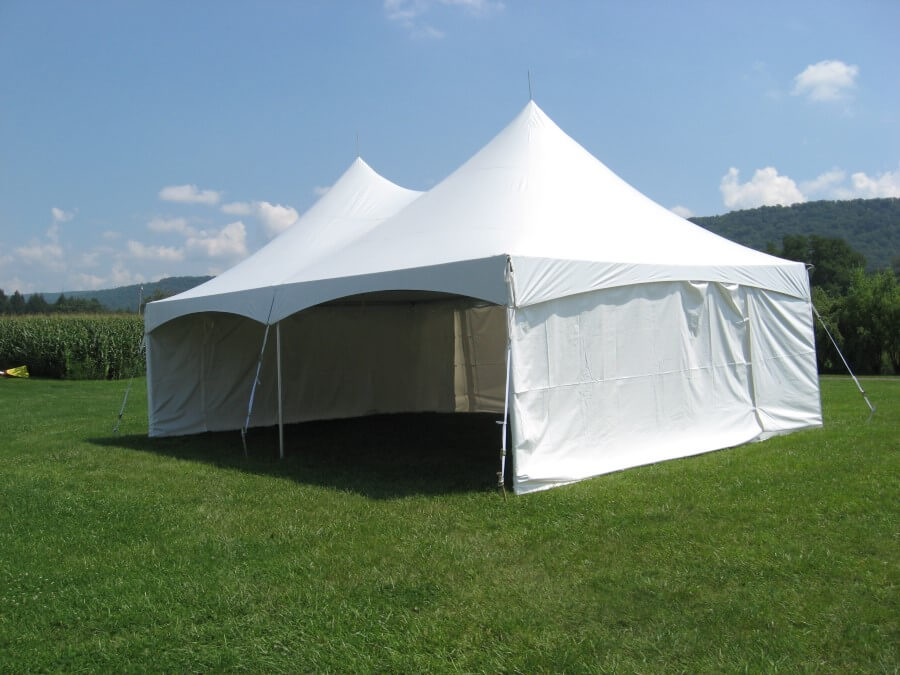
Construction projects often require temporary structures to serve various purposes. When it comes to creating such structures, construction tent rentals have proven to be a versatile and cost-effective solution. These tents can be utilized for a wide range of purposes on construction sites, offering flexibility and convenience to project managers and workers alike. All Occasions Tents is one such provider, offering a variety of tent options to meet the needs of construction projects of all sizes.
The Benefits of Construction Tent Rentals
Construction tent rentals offer numerous benefits that make them an attractive option for various construction projects. Here are some of the key advantages:
1. Flexibility
- Construction tent rentals can be easily set up and taken down, providing flexibility in their use and allowing for quick adjustments based on project needs.
- They can be customized to suit specific requirements, such as size, shape, and features, making them versatile for different applications.
2. Cost-Effectiveness
- Renting construction tents is often more cost-effective than purchasing or building permanent structures, saving money for construction companies.
- There are no long-term maintenance costs associated with construction tent rentals, as the rental company takes care of installation, maintenance, and removal.
3. Weather Protection
- Construction tent rentals provide shelter from the elements, allowing work to continue even in adverse weather conditions like rain or extreme heat.
- They can also offer insulation and climate control options to create a comfortable work environment for construction crews.
Common Uses of Construction Tent Rentals
Construction tent rentals can be used in a variety of ways to support construction projects. Some common applications include:
1. Temporary Offices
Construction tent rentals can serve as temporary office spaces on construction sites, providing a designated area for project managers, engineers, and other staff to work and hold meetings.
2. Storage Solutions
Construction tent rentals can be used to store tools, equipment, materials, and other supplies securely on-site, reducing the need to transport them back and forth from off-site locations.
3. Shelter for Workers
Construction tent rentals can provide a comfortable and safe shelter for construction workers during break times, allowing them to rest and recharge before returning to work.
4. Event Spaces
Construction tent rentals can be transformed into event spaces for project milestones, team-building activities, or client meetings, adding a touch of professionalism and convenience to the project.
Customization Options for Construction Tent Rentals
Construction tent rentals can be tailored to meet specific project requirements through various customization options. Here are some common customization features:
1. Size and Layout
- Construction tents come in various sizes and layouts to accommodate different needs, from small temporary offices to large storage facilities.
- They can be interconnected or divided into separate sections to create distinct areas for different purposes.
2. Flooring and Lighting
- Options for flooring materials and lighting fixtures are available to enhance the functionality and aesthetics of construction tent rentals.
- From durable flooring to energy-efficient lighting, these features can improve the usability and comfort of the tent space.
3. Branding and Signage
- Construction tent rentals can be customized with branding elements, such as logos, colors, and signage, to promote the construction company's identity and create a professional image.
- Clear signage can also help guide visitors and workers within the tent structure, improving navigation and communication.
Conclusion
Construction tent rentals offer a flexible and versatile solution for a wide range of construction project needs. From temporary offices to storage solutions, these tents provide a cost-effective, weather-protected, and customizable option for construction companies looking to enhance their on-site facilities. By taking advantage of the benefits and customization options of construction tent rentals, project managers can streamline operations, improve efficiency, and create a more productive work environment for their teams.

